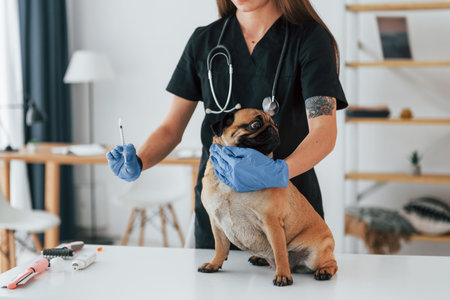Understanding Liver Disease in Exotic Pets
Liver disease in exotic pets is a significant health concern for pet owners across the United States. Unlike traditional pets such as dogs and cats, exotic animals—including reptiles, birds, ferrets, rabbits, and small mammals—have unique physiological traits that can make liver disorders more challenging to identify and treat. The liver plays a crucial role in almost every aspect of an animals metabolism: it processes nutrients, detoxifies harmful substances, produces essential proteins, and supports the immune system. When the liver is compromised, these vital functions break down, leading to a wide range of health problems that can quickly become life-threatening if left untreated. Understanding what constitutes liver disease in exotic pets is the first step toward recognizing the importance of liver health and ensuring your pet’s overall well-being. Whether you have a parrot, a hedgehog, or a bearded dragon, being aware of the risks and early signs of liver issues can make all the difference in providing them with a long and healthy life.
2. Common Signs and Symptoms
Recognizing liver disease in exotic pets early is crucial for effective treatment, as symptoms can be subtle or mistaken for other illnesses. Both behavioral and physical changes may indicate underlying liver issues, and these signs often vary depending on the species. Below is a table summarizing common early and advanced symptoms to help pet owners monitor their exotic companions more closely:
| Stage | Behavioral Changes | Physical Symptoms |
|---|---|---|
| Early Signs | Lethargy, reduced appetite, hiding, decreased social interaction | Mild weight loss, dull coat/feathers/scales, mild jaundice (yellowing of eyes or skin), changes in fecal color |
| Advanced Signs | Disorientation, severe depression, refusal to eat or drink, aggression or uncharacteristic tameness | Pronounced jaundice, abdominal swelling, vomiting or diarrhea (species dependent), seizures, bleeding disorders |
How to Recognize Early Signs in Exotic Pets
Many exotic pets such as reptiles, birds, and small mammals are adept at hiding illness until it becomes severe. Early detection relies on observing subtle shifts in behavior—like a normally active bird becoming withdrawn or a reptile basking less often than usual. Appetite loss is frequently one of the first signs noted by attentive owners.
Physical Symptoms Not to Miss
Physical signs may include yellowish discoloration of the skin, mouth lining, or eyes (jaundice), especially visible in species with lighter pigmentation. Other red flags are unexplained weight loss, persistent vomiting (in applicable species), and unusual droppings—such as changes in color or consistency.
When to Seek Veterinary Care
If you notice any combination of these symptoms—especially if they progress from mild to severe—it’s important to consult an exotic animal veterinarian right away. Early intervention can make a significant difference in your pet’s prognosis and quality of life.
![]()
3. Causes and Risk Factors
Liver disease in exotic pets can stem from a variety of causes, many of which are closely related to their unique husbandry needs and sensitivity to environmental changes. Understanding these factors is essential for preventing the onset of liver problems and ensuring the overall health of your exotic companion.
Dietary Issues
One of the leading causes of liver disease in exotic pets is improper diet. Many species have very specific nutritional requirements, and diets that are too high in fat, low in essential nutrients, or lacking in variety can place significant stress on the liver. For example, birds fed an all-seed diet or reptiles given too much protein may develop fatty liver disease or other hepatic disorders over time.
Environmental Stress
Exotic pets are often highly sensitive to changes in their environment. Stressors such as frequent handling, loud noises, sudden changes in temperature or humidity, and inadequate housing can weaken the immune system and predispose animals to liver disease. Chronic stress elevates cortisol levels, which in turn can compromise liver function and make pets more susceptible to illness.
Toxins and Chemical Exposure
Another significant risk factor is exposure to toxins. Exotic pets can be accidentally poisoned by household cleaners, certain plants, heavy metals, pesticides, or even medications not intended for their species. Because their livers are responsible for detoxifying harmful substances, repeated or acute exposure can result in severe hepatic damage.
Genetic Predispositions
Some exotic pets may be genetically prone to developing liver disease. Breeds or species with a known predisposition require even more careful management when it comes to diet and environment. Responsible breeding practices and early screening can help identify at-risk individuals before symptoms become severe.
Conclusion
Recognizing these causes and risk factors allows pet owners to take proactive steps in minimizing threats to their exotic pet’s liver health. Working closely with an experienced exotic animal veterinarian is crucial for providing optimal care tailored to each species’ unique needs.
4. Getting a Veterinary Diagnosis
If you suspect your exotic pet may be suffering from liver disease, it’s crucial to seek professional veterinary care as soon as possible. Timely intervention can make a significant difference in your pet’s prognosis and quality of life. Here’s what to expect when seeking a diagnosis at a U.S. veterinary clinic:
Steps to Seek Professional Help
- Find an Exotic Animal Veterinarian: Not all veterinarians specialize in exotic pets, so look for a clinic with experience treating species like birds, reptiles, rabbits, or small mammals.
- Schedule an Appointment Promptly: Early symptoms can be subtle—don’t wait for severe signs before calling your vet.
- Prepare Your Pet’s History: Bring notes on your pet’s diet, housing, recent behaviors, and any noticeable changes.
- Transport Safely: Use a secure carrier appropriate for your pet’s species to minimize stress during travel.
Common Diagnostic Procedures in U.S. Clinics
| Diagnostic Tool | Description | Purpose |
|---|---|---|
| Physical Examination | A thorough hands-on assessment by the veterinarian. | Detects external signs like jaundice or swelling. |
| Blood Work (CBC & Chemistry Panel) | Lab analysis of blood samples. | Evaluates liver enzymes and organ function. |
| X-rays & Ultrasound | Imaging technologies used on-site. | Visualizes liver size, shape, and potential masses. |
| Liver Biopsy | Tissue sample collection under anesthesia. | Confirms diagnosis and identifies disease type. |
| Fecal & Urine Tests | Laboratory analysis of waste products. | Screens for infections or metabolic issues affecting the liver. |
The Importance of Timely Intervention
Liver disease in exotic pets can progress rapidly and may not show obvious symptoms until advanced stages. Early diagnosis allows for more treatment options and a better chance at managing the condition effectively. Quick action also helps prevent secondary complications such as infections or organ failure. Remember: if you notice any changes in your pet’s appetite, behavior, or appearance, don’t hesitate to contact your veterinarian right away.
5. Treatment Options and Home Care
Medical Approaches for Managing Liver Disease
When it comes to treating liver disease in exotic pets, a veterinarian will tailor a plan based on the species, underlying cause, and severity of the illness. Medical treatments often include supportive therapies such as intravenous fluids to prevent dehydration, vitamin and mineral supplementation (especially B vitamins), and medications to reduce inflammation or support liver function. In some cases, antibiotics may be prescribed if an infection is involved, while antifungal or antiparasitic drugs are used for specific pathogens. Special diets low in protein or fat, or high in antioxidants, may also be recommended to minimize stress on the liver. Regular bloodwork and imaging can help monitor progress and adjust treatments as needed.
Practical Home Care Strategies
Caring for an exotic pet with liver disease at home requires close attention and commitment. American pet owners are encouraged to maintain a calm, comfortable environment to reduce stress on their animal. Consistent routines—such as scheduled feeding times using the veterinarian-recommended diet—are crucial. Ensure fresh water is always available and keep the habitat clean to prevent secondary infections. Monitor your pet’s behavior and appetite daily; report any changes like reduced activity, refusal to eat, or worsening symptoms promptly to your vet. Administer all prescribed medications exactly as directed, and never give over-the-counter drugs without veterinary approval.
Aligning With American Pet Ownership Standards
In the United States, responsible exotic pet ownership means prioritizing preventive care and open communication with veterinarians who have experience with non-traditional species. Keep detailed records of your pet’s health, including medication schedules and symptom observations. Take advantage of telemedicine services if available for quick check-ins between in-person visits. Finally, educate yourself about your specific pet’s needs by consulting reputable sources or local exotic animal groups. By combining professional medical management with attentive home care, you give your exotic companion the best chance at recovery and long-term well-being.
6. Prevention Tips for Owners
Smart Steps to Protect Your Exotic Pet’s Liver Health
Preventing liver disease in exotic pets starts with informed, proactive care. As an owner, you play a crucial role in minimizing health risks by creating an environment and routine that supports your pet’s unique needs. Here are some practical tips to help keep your exotic companion healthy and happy.
Feed a Species-Appropriate Diet
Nutrition is one of the most important factors in liver health. Always research or consult with an exotics-savvy veterinarian to ensure your pet’s diet matches its species-specific requirements. Avoid offering fatty, sugary, or processed foods that can stress the liver. Stick to fresh, high-quality ingredients and be wary of overfeeding treats, even those marketed as healthy for pets.
Create a Safe and Enriching Habitat
Your pet’s habitat should mimic their natural environment as closely as possible. This includes proper temperature, humidity, lighting (like UVB for reptiles), and opportunities for exercise and mental stimulation. Regular cleaning is essential—dirty enclosures can expose pets to toxins or infections that strain the liver.
Practice Routine Veterinary Care
Schedule annual or biannual wellness visits with a vet experienced in exotic animals. Routine bloodwork and physical exams can catch early signs of liver problems before they become serious. Discuss any changes in your pet’s behavior, appetite, or appearance promptly—early intervention is key.
Additional Tips for Peace of Mind
- Limit exposure to household chemicals and toxins.
- Offer clean, filtered water daily.
- Monitor weight regularly to prevent obesity-related liver issues.
- Stay updated on recommended vaccinations and parasite control.
By following these prevention tips tailored to exotic pets, you’ll give your animal the best chance at a long, vibrant life free from liver disease complications.


